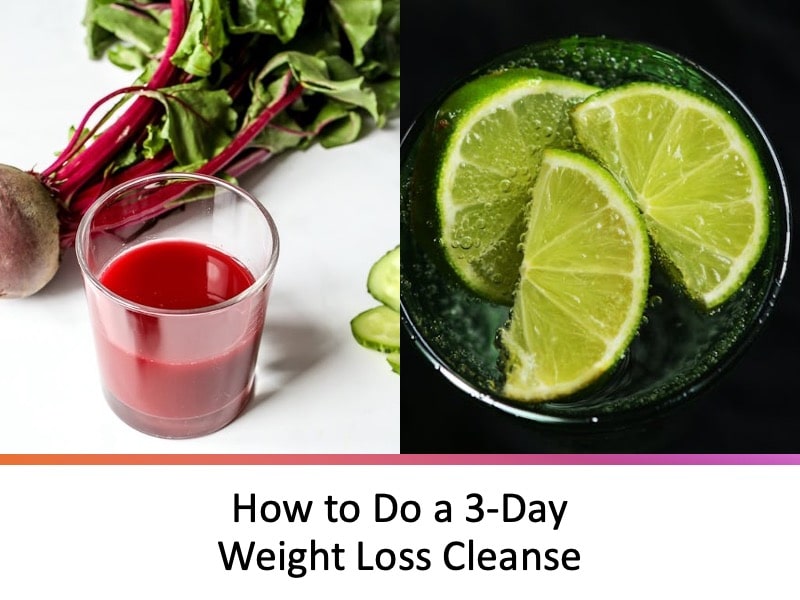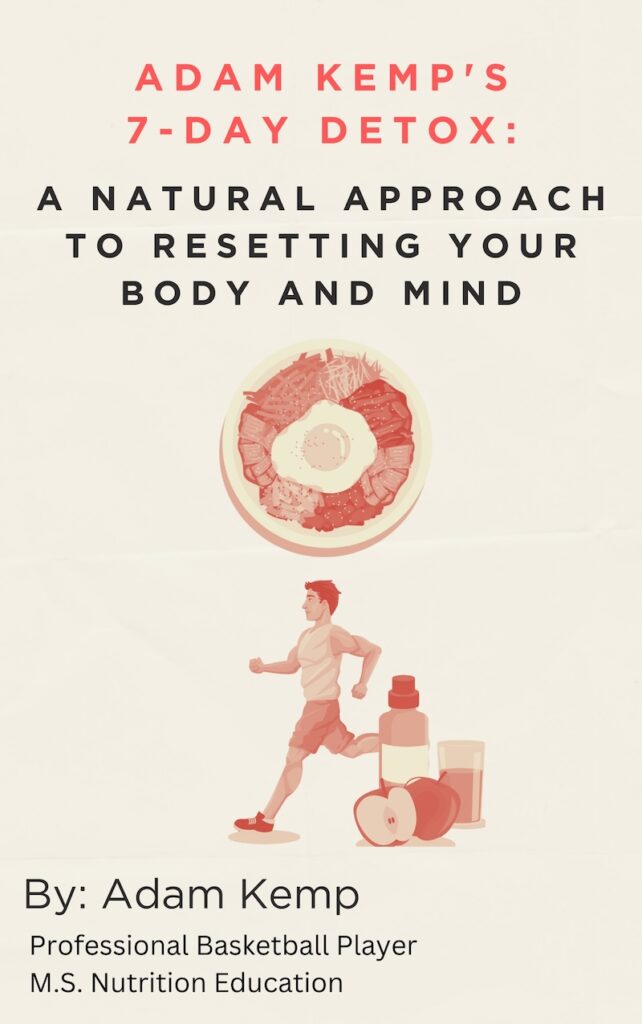How to Do a 3-Day Weight Loss Cleanse
A 3-day weight loss cleanse might seem like a good idea if you feel sluggish, bloated, or off-track with your eating habits.
Whether it’s after a weekend of indulgence, a period of stress eating, or simply the desire for a physical and mental reset, a short 3-day cleanse can be an effective way to realign with your health goals.
As a professional basketball player with over a decade of international experience and a master’s degree in Nutrition Education, I’ve used these same strategies to reset my own health and performance during long seasons, travel, and injury recovery.
My approach combines real-world application with evidence-based guidance—making this 3-day weight loss cleanse both practical and effective for anyone looking to reclaim control of their body and habits.
However, a cleanse is not a magic fix or crash diet.
When done improperly, such as through excessive calorie restriction or relying on gimmicky juice cleanses, a 3-day weight loss cleans can lead to fatigue, muscle loss, blood sugar crashes, metabolic adaptations to weight loss, and rebound eating.
That’s why it’s essential to approach your 3-day weight loss cleanse with intention, adequate preparation, and respect for your body’s natural rhythms.
A well-executed “cleanse” can detoxify your body, reduce inflammation, improve digestion, hydrate your body, and, yes, even promote weight loss.
It helps eliminate processed foods, reduce sugar and alcohol intake, and reconnect you with hunger and fullness cues.
For some, it also acts as a spiritual or emotional reset—an intentional pause to slow down, refocus, and reenergize.
By following foundational principles like intermittent fasting, whole-food nutrition, moderate movement, and proper hydration, you can create a three-day cleanse that supports sustainable weight loss and lasting well-being without putting your health at risk.
As a follow-up to your 3-day weight loss cleanse, I highly recommend reading my free 7-Day Detox guide, which offers a deeper, more structured guide to nourishing and supporting your body’s natural detoxification systems.
It’s the perfect next step if you want to learn how to detox your body, build on your momentum, and learn sustainable strategies for long-term health. Sign up for my email list to receive it instantly in your inbox.
Subscribe to My Newsletter
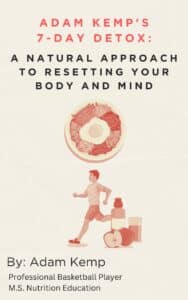
Subscribe to my newsletter to receive occasional updates on new articles and health and fitness tips. Also, you will receive my 60-page eBook on resetting your body and mind in 7-days for FREE!
What Is a Cleanse?
A cleanse is a short-term, intentional reset designed to support your body’s natural processes of elimination and renewal.
Rather than relying on extreme restrictions or gimmicky products, a well-structured cleanse focuses on removing inflammatory or burdensome foods while emphasizing hydration, nutrient density, and digestive rest.
At its core, a cleanse is not about “flushing toxins” with a magic drink—it’s about creating the right environment for your body’s detoxification systems (liver, kidneys, gut, skin, and lymphatic system) to function optimally.
This is done by temporarily simplifying your diet, increasing fluid intake, managing stress, and engaging in light movement.
Most cleanses last from 1 to 7 days and may involve intermittent fasting, whole-food nutrition, herbal teas, and natural cleansing beverages like lemon water or green smoothies.
The goal is to reduce inflammation, improve digestion, enhance energy, and establish habits that can be carried into your everyday routine.
A properly designed cleanse isn’t a punishment—it’s a pause.
Weight loss cleanses should be a moment to recalibrate your physical and mental habits for weight loss, helping you feel lighter, clearer, and more in control of your health.
Are Cleanses Necessary?
Cleanses aren’t necessary—but they can be incredibly helpful.
Your body is equipped with powerful, built-in detoxification systems—namely the liver, kidneys, digestive tract, lungs, skin, and lymphatic system—that work around the clock to process and eliminate waste.
Under normal conditions, these systems function efficiently without outside intervention.
However, modern life often overwhelms these systems.
Processed foods, alcohol, sugar, sedentary lifestyles, chronic stress, sleep disruption, environmental pollutants, and medication use can all tax your body’s ability to maintain balance.
Over time, this burden may lead to symptoms like fatigue, bloating, brain fog, stubborn weight gain, or digestive discomfort.
That’s where a well-designed cleanse can serve a valuable purpose, not as a replacement for your body’s natural systems but as a strategic support tool to help them function more effectively.
A short cleanse gives your body:
- A break from inflammatory foods and lifestyle habits
- Nutritional support to assist liver and gut health
- Hydration to facilitate waste elimination
- Time and space for repair and restoration
So, no, a cleanse isn’t required to be healthy, but for many people, it’s a powerful way to hit the reset button and rebuild healthier habits with focus and intention.
When done properly, it can be the springboard to more sustainable, long-term wellness.
What Is a 3-Day Weight Loss Cleanse?
A 3-day weight loss cleanse is a focused, short-term reset that prioritizes intermittent fasting, whole-food nutrition, hydration, and light movement to help your body shed excess water weight, reduce bloating, and restore metabolic balance.
It’s designed to give your digestive system a break and optimize your body’s natural detox pathways, primarily the liver, kidneys, gut, and lymphatic system, by removing the most common sources of dietary stress, such as processed foods, refined sugars, excessive caffeine, alcohol, and artificial additives.
During these three days, I suggest you eat within a structured time window (often using a 16:8 intermittent fasting protocol), avoid snacking between meals, and focus on meals made entirely from nutrient-dense, anti-inflammatory foods.
Natural detox drinks like green tea, lemon water, or greens smoothies support hydration and metabolic function, while daily movement, such as walking, stretching, or light strength training, encourages circulation and elimination through sweat and lymphatic flow.
A 3-day weight loss cleanse is not about starvation or quick fixes. It’s about pressing pause on harmful habits, realigning with your health goals, and giving your body the conditions it needs to feel lighter, more energized, and in control.
At its core, cleansing is about optimization, not deprivation—and when done correctly, it can be the catalyst for long-term transformation.
How to Prepare for a 3-Day Weight Loss Cleanse
A 3-day weight loss cleanse requires more than just motivation. Here’s how to get your environment and mindset ready:
- Plan meals ahead of time so you’re not scrambling to find healthy options. Meal prepping is one of the best kitchen hacks to save you time and money.
- Grocery shop for real food: Focus on produce, quality protein, herbs, and natural beverages. Downloading the Ibotta App and using an Ibotta Referral Code can help you save money on healthy groceries if you’re trying to lose weight on a budget.
- Eliminate temptations by clearing out processed snacks and sugary drinks.
- Set your goals and intentions: I recommend using SMART goals to know what you want to get out of these 3 days, such as energy, mental clarity, digestive reset, etc.
- Inform others if needed: Let your family or coworkers know you’re cleansing so they can support your effort
The Key Principles of a Safe & Effective 3-Day Weight Loss Cleanse
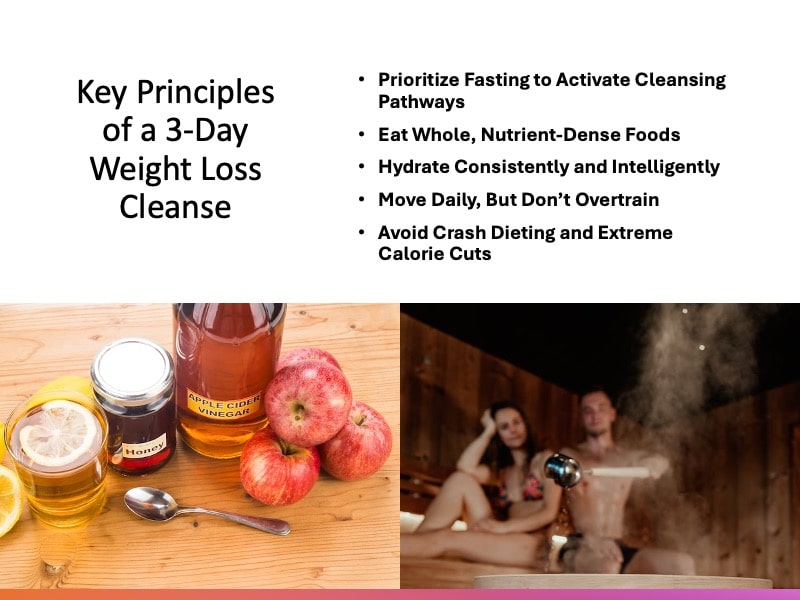
A 3-day weight loss cleanse only works if it’s rooted in balance, intention, and nourishment—not extreme restrictions or fads.
To get real results without compromising your health, it’s essential to follow a few guiding principles that support your body’s natural detoxification and fat-burning processes.
These core principles ensure your cleanse is safe, sustainable, and genuinely beneficial.
They emphasize how to eat, move, hydrate, and structure your day in a way that maximizes results while minimizing stress.
Whether your goal is to lose a few pounds, reduce bloating, or simply feel better in your body, I believe these principles provide the foundation for a smarter, more effective 3-day weight loss cleanse.
1.) Prioritize Fasting to Activate Cleansing Pathways
During your 3-day cleanse, aim to follow a 16:8 intermittent fasting protocol, where you fast for 16 hours and eat within an 8-hour window (e.g., 12 p.m. to 8 p.m.).
Fasting triggers processes like autophagy, which helps the body clear out damaged cells and toxins (Bagherniya, 2018).
It also improves insulin sensitivity and may promote fat loss without requiring extreme caloric restriction.
- Use black coffee, herbal teas, and lemon water in the morning to stay energized during the fast.
- Break your fast with nutrient-dense meals that are easy on digestion.
2.) Eat Whole, Nutrient-Dense Foods
When you eat during your 3-day weight loss cleanse, your meals should be simple, colorful, and made from whole ingredients.
Avoid processed foods, added sugars, seed oils, and anything that causes bloating or fatigue.
Focus on:
- Leafy greens & cruciferous vegetables: Support liver detox and fiber intake
- Lean proteins (or plant-based equivalents): Protein helps stabilize blood sugar and support muscle maintenance
- Healthy dietary fats: Avocados, olive oil, nuts, and seeds help you feel full and absorb fat-soluble nutrients
- Low-glycemic fruits: Berries, citrus, and apples support hydration and antioxidant intake
- Fermented foods: Probiotic-rich fermented foods like yogurt, sauerkraut, kefir and kombucha promote gut health
Meals should leave you feeling nourished—not stuffed.
These eating principles make up the foundation of a healthy weight loss diet plan and should be sustainable after your 3-day weight loss cleanse as well.
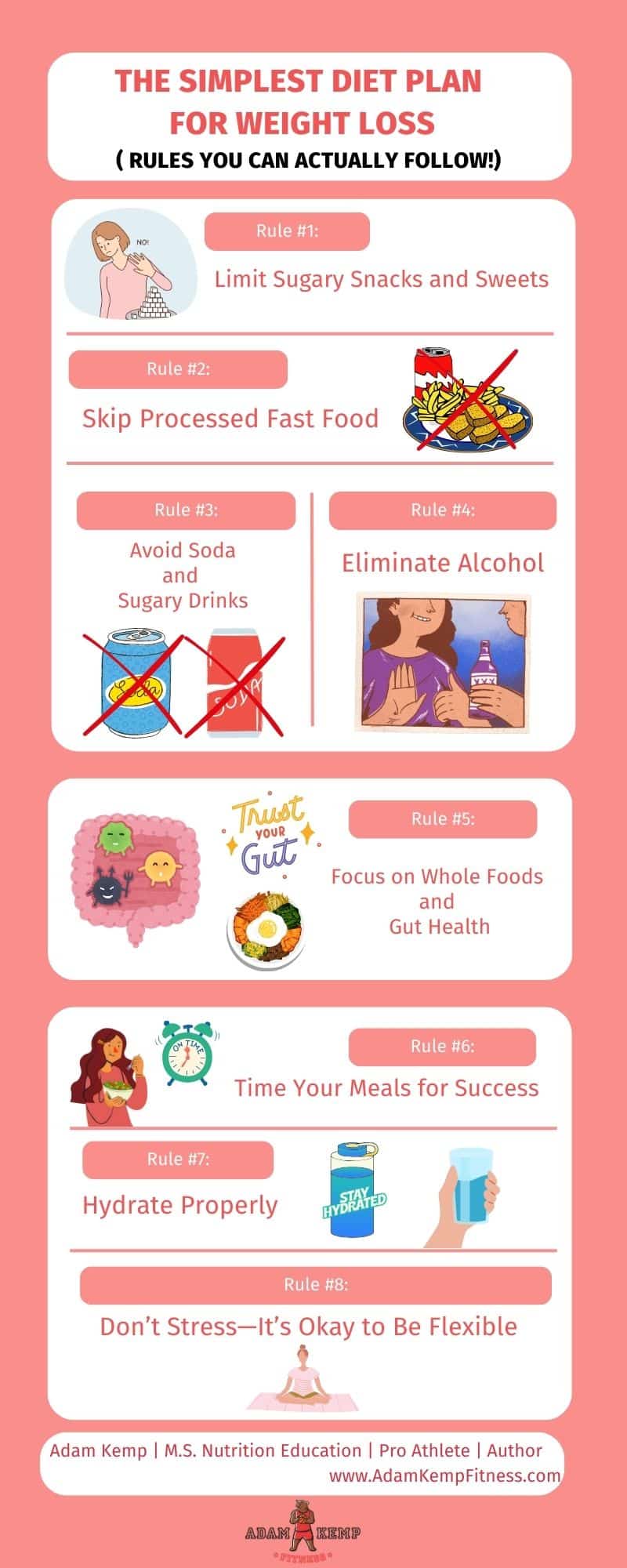
3.) Hydrate Consistently and Intelligently
Hydration is often the most overlooked aspect of a weight loss cleanse.
Water is required for fat metabolism, liver function, digestion, and cellular detoxification (Thornton, 2016).
General hydration tips:
- Aim for 2.5 to 3.5 liters per day, depending on activity and climate
- Add sea salt, lemon, or cucumber to your water for trace minerals and better absorption
- Herbal teas like dandelion, ginger, green tea, or peppermint can aid digestion and liver support
Monitor your hydration status by checking your urine color—it should be light yellow.
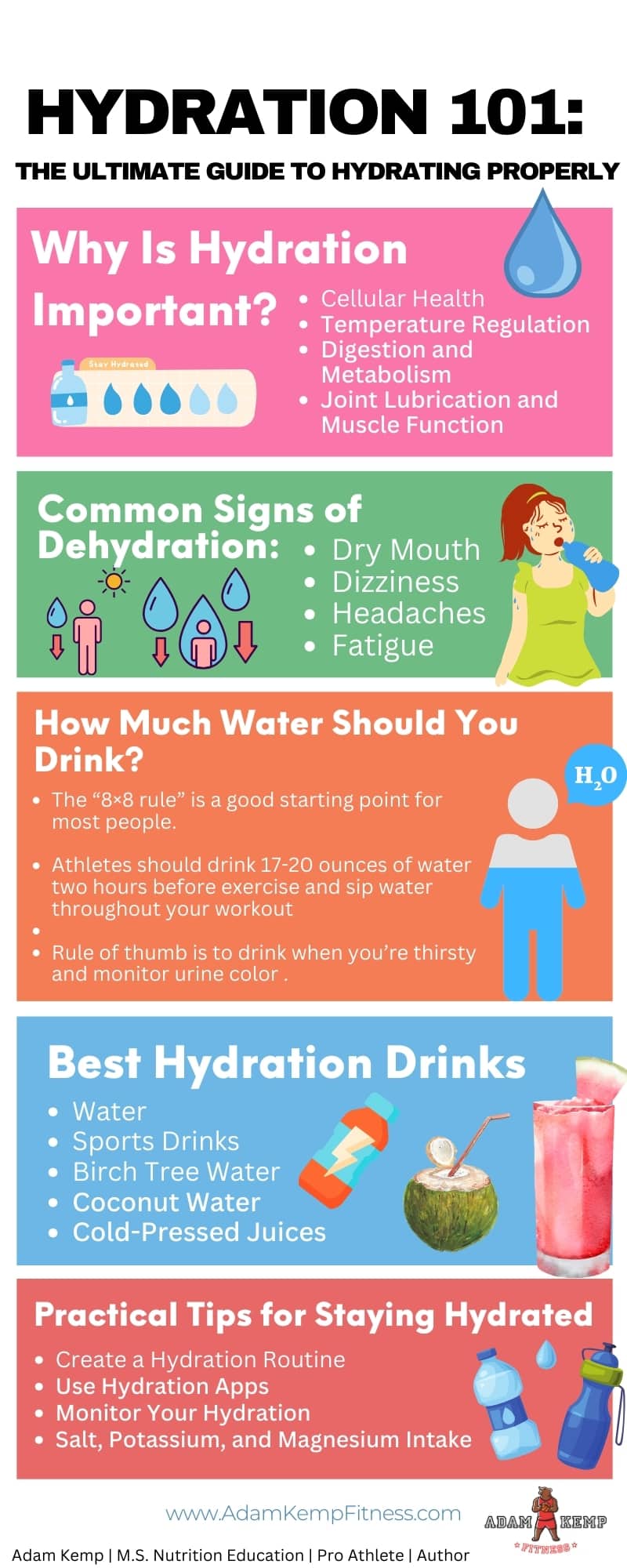
4.) Move Daily, But Don’t Overtrain
Exercise during a 3-day weight loss cleanse should support circulation, lymphatic drainage, and fat metabolism, not create excess stress or fatigue.
Overtraining on low calories can elevate cortisol and work against you.
A daily movement strategy:
- Day 1: Fasted walking or low-impact cardio workouts (30–45 minutes)
- Day 2: Light strength training or bodyweight HIIT (~20 minutes)
- Day 3: Mobility work, stretching, or foam rolling
Sweating is beneficial, so using a steam room or sauna (if available) or doing light exercise in a sweat suit can support detoxification through the skin, but be sure to rehydrate properly (Kuan et al., 2022).
5.) Avoid Crash Dieting and Extreme Calorie Cuts
It’s tempting to drop calories dramatically to see the scale move, but crash dieting often backfires.
It can slow your metabolism, increase hunger hormones, and lead to rebound weight gain.
Instead:
- Eat real food until satisfied, but avoid snacking mindlessly
- Choose meals that are high in fiber and protein to regulate appetite
- Pay attention to your body’s signals—not the calorie counter
A sustainable cleanse doesn’t punish your body—it supports it.
Preparation creates momentum—and momentum drives results.
Reflect and Transition After the Cleanse
The most important part of your 3-day cleanse is what happens next.
When the three days are done, don’t rush back to old habits. Take time to reflect, assess what worked, and begin planning your next steps.
Ask yourself:
- How do I feel—physically, mentally, emotionally?
- What food habits made me feel best?
- What do I want to continue—fasting, better hydration, fewer processed foods?
Use this reflection day to ease back into a normal routine with mindfulness. Start with small additions, like complex carbs, dairy, or whole grains, and pay attention to how they affect your digestion and energy.
Final Thoughts: Best 3-Day Weight Loss Cleanse Tips
A 3-day weight loss cleanse is most effective when it’s viewed as a reset—not a restriction.
It’s a chance to remove common stressors, support your body’s natural cleansing systems, and create space for healing and repair. The focus should always be on nourishment, not punishment.
By emphasizing intermittent fasting, hydration, whole foods, and light movement, you create conditions that support multiple types of detoxification, including digestive rest, improved liver function, and better lymphatic flow.
These subtle but powerful shifts can leave you feeling lighter, more energized, and mentally clear.
Avoid the trap of crash dieting or chasing unsustainable results.
Instead, use this cleanse as an opportunity to observe, reflect, and rebuild habits that align with your long-term goals.
When approached with intention, this short 3-day period can be the spark that reignites your motivation and jumpstarts lasting transformation—far beyond what the scale can measure.

